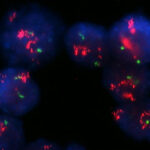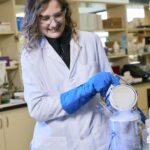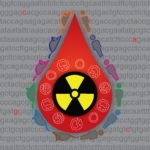Biosciences researchers have used Collaborative Cross mice, a mouse model system designed to mimic the diversity of human populations, to identify a set of genetic factors that could help refine treatment approaches for a fast-growing form of breast cancer.
Infrared and AI Detect Low-dose Radiation Long After Exposure
Biosciences researchers have established a powerful new method that couples advanced infrared imaging techniques with statistical machine learning models to quickly and non-invasively determine with high accuracy whether an animal was exposed to radiation—even at extremely low doses almost three months post exposure.
Toward a Genetic Understanding of Variability in Radiation Sensitivity
Injury to immune-system and blood-forming cells is a common side effect of radiation therapy, which more than half of all cancer patients receive as part of their treatment. Biosciences Area researchers and their collaborators used a genetically diverse mouse population to model individual differences in sensitivity to radiation exposure.
Genetic Background Influences Cancer Risk of Thirdhand Smoke Exposure
A new study investigating the effect of thirdhand smoke (THS) in a mouse model system specially designed to mimic the genetic diversity of human populations has shed new light on how genetic predispositions contribute to an individual’s cancer risk. This work is an instrumental step towards building a more realistic understanding of how tobacco smoke residue could impact cancer risk in people.
Was this page useful?







